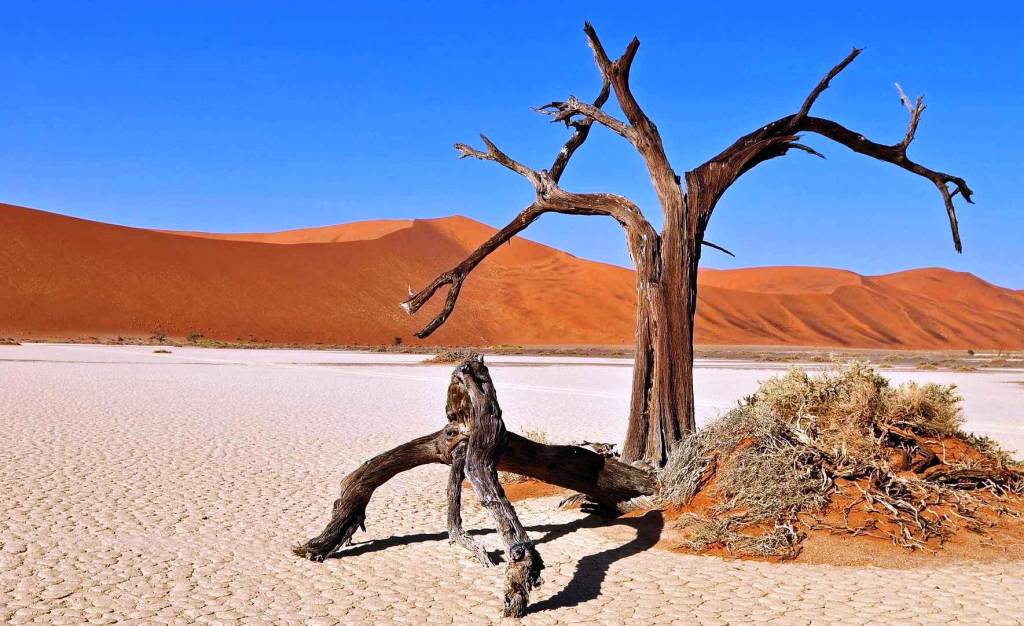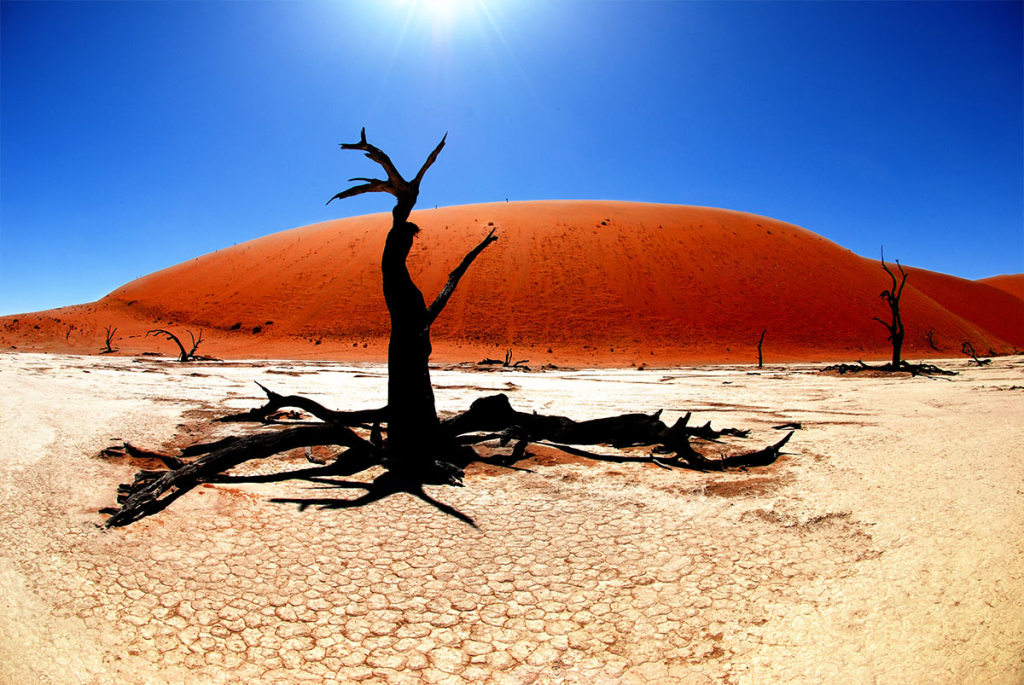Deadvlei is a white clay pan located nearby the more famed salt pan of Sossusvlei, inside the Namib-Naukluft Park in Namibia. This is also written DeadVlei or Dead Vlei, which means “dead marsh”. In English, this is called dead and in Afrikaans vlei, is a lake or marsh in a valley between the dunes. The pan also is referred to as “Dooie Vlei” which is a completely Afrikaans name.
When you’d be searching on Google there are a number of references to the site, its name often being translated speciously in terms such as “dead valley”; a vlei is not a valley which in Afrikaans is “vallei”. Nor is the site a valley; the pan is a desiccated vlei. Well; Dead Vlei has been claimed to be surrounded by the highest sand dunes in the world, the highest reaching 300-400 meters often called “Big Daddy” or “Crazy Dune”), which rest on a sandstone terrace.
The clay pan was shaped after rainfall, when the Tsauchab river flooded, generating short-term shallow pools where the profusion of water allowed camel thorn trees to grow. Hence when the climate changed, drought hit the area, and sand dunes encroached on the pan, which blocked the river from the area.
Then the trees died, as there no longer was sufficient water to survive. There’re few species of plants remaining, such as “Salsola” and clumps of “Nara”, adapted to surviving off the morning mist and very rare rainfall. The remaining skeletons of the trees, which are believed to be about 900 years old, are now black because the extreme sun has burned them. Nevertheless not petrified, the wood does not decompose because it is so dry.
Also, Read – Kaali Meteor Crater of Estonia
































